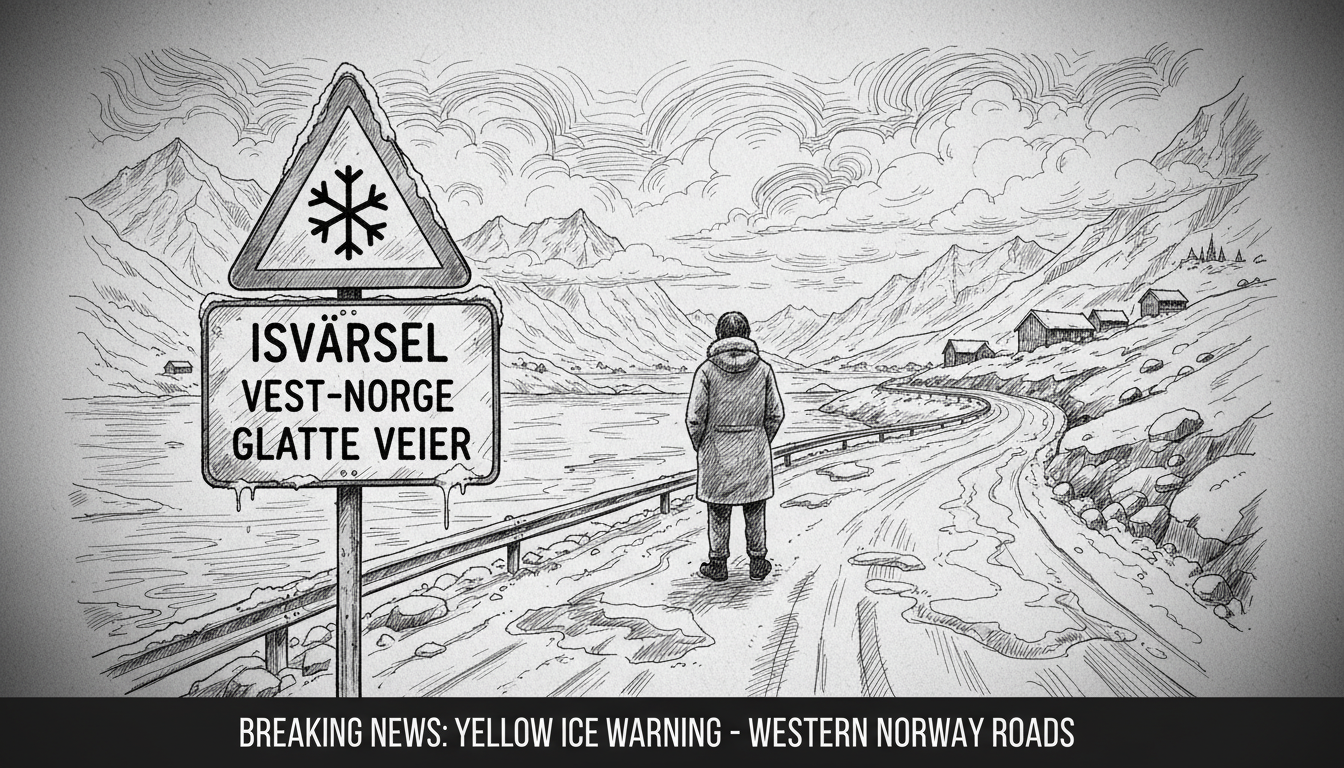Meteorologists have issued a yellow weather warning for ice across Western Norway. The alert covers Friday afternoon through Saturday morning. Dangerous driving conditions are expected throughout the region.
The warning comes as mild weather and rain transition over cold ground. Precipitation will start as snow or sleet in most areas. Then it will freeze on contact with cold road surfaces.
Road authorities advise drivers to prepare their vehicles properly. They also warn pedestrians and cyclists about slippery conditions. Officials recommend considering studded shoes or ice grips for walking.
Ice can be difficult to see on roadways, according to weather experts. Black ice forms a transparent layer that blends with asphalt. This creates particularly hazardous situations for all travelers.
Western Norway's challenging terrain makes ice warnings especially serious. The region features numerous fjords, mountains, and coastal roads. These geographic features create microclimates where conditions change rapidly.
Similar warnings extend to Rogaland, Trøndelag, and Møre og Romsdal counties. The entire western coast faces a slippery start to the weekend.
Norwegian weather services issue color-coded warnings for severe conditions. Yellow represents the middle level of danger. It indicates conditions that could pose risks to the general public.
Winter driving preparation is essential in Scandinavia during colder months. Norwegian law requires proper winter tires from November through April. Many drivers use studded tires for additional traction on icy roads.
International visitors should note that Nordic countries take winter preparedness seriously. Road maintenance crews work continuously during winter storms. But changing conditions can still create hazardous situations quickly.
Local residents know to check weather forecasts regularly during winter. They keep emergency supplies in their vehicles. These typically include blankets, food, and warning triangles.
The current warning reflects typical late autumn weather patterns in Norway. As temperatures fluctuate around freezing, ice formation becomes common. This creates challenges for transportation systems across the country.
Drivers should reduce speed and increase following distances during such conditions. Sudden braking can lead to loss of control on icy surfaces. Public transportation often provides more reliable travel during severe weather warnings.
Weather officials will continue monitoring conditions throughout the weekend. They may upgrade or extend warnings as new weather data becomes available.

